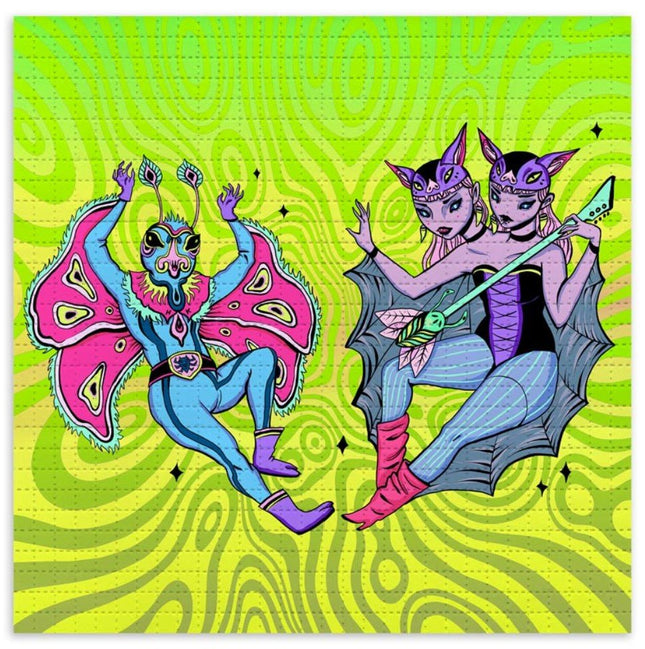
Villain

Lauren YS MothMan x Nai Palm Blotter Paper Archival Print by Lauren YS
MothMan x Nai Palm Blotter Paper Limited Edition Archival Pigment Print Art on Perforated Blotter Paper by Lauren YS pop culture LSD artwork. Archival Pigment Print on Perforated Blotter Paper Size: 7.5 x 7.5 Inches Release: April 19, 2021. Limited blotter editions are hand-perforated by Zane Kesey & may vary slightly from the example shown. The "Mothman x Nai Palm Blotter Paper" is a striking example of contemporary pop culture art intersecting with the psychedelic experience often associated with blotter art. Created by the artist Lauren YS, this limited edition archival pigment print is presented on perforated blotter paper, a medium traditionally linked with LSD and the counterculture movement of the 1960s and 70s. Released on April 19, 2021, this artwork measures 7.5 x 7.5 inches, a size that pays homage to the standard dimensions of blotter art sheets. The perforation of these prints is a meticulous process, hand-performed by Zane Kesey, which may result in slight variations that enhance the uniqueness of each piece. Lauren YS's creation dives into the vibrant aesthetics of street pop art, featuring characters that draw from mythological and fantastical realms. The central figure, MothMan, paired with Nai Palm, alludes to a fusion of natural charisma and human artistry, creating a narrative that is as enigmatic as it is visually engaging. The swirling, hypnotic background amplifies the otherworldly vibe of the characters, inviting the viewer into a narrative that feels dream-like and anchored in pop culture references. This piece is not merely a static image; it's a portal into the broader discussions of street pop art and graffiti artwork as platforms for alternative expression. It captures the essence of subcultural art forms, where the unconventional becomes the canvas for exploration and innovation. "Mothman x Nai Palm Blotter Paper" stands as a testament to the enduring legacy of blotter art in modern visual culture and its reimagined place within the gallery of street pop art. Lauren YS's work exemplifies how traditional materials can be repurposed to offer new perspectives within the art world, echoing the transformative power of street art and its ability to infuse everyday objects with profound artistic significance.
$406.00


